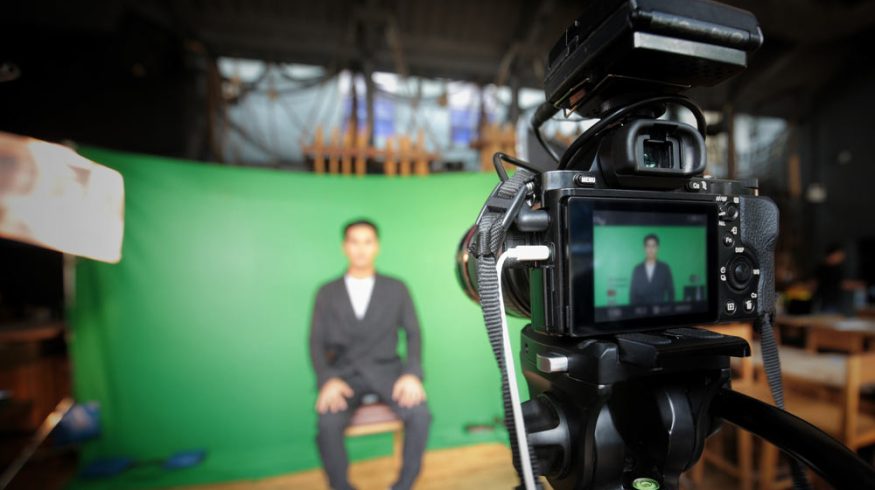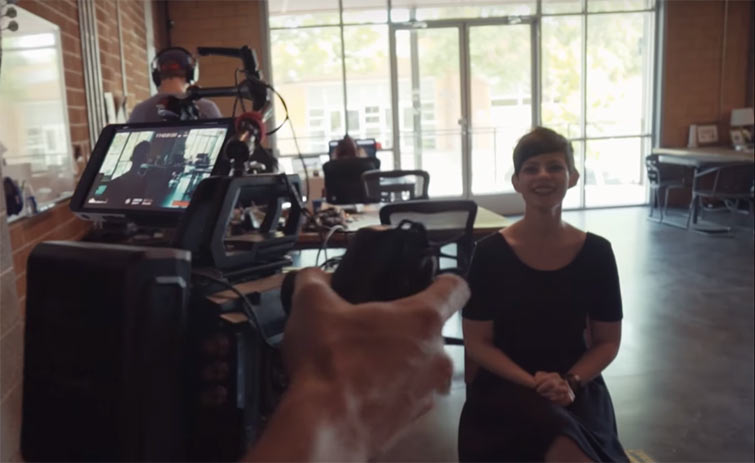
Tips for Framing and Focus in Your Video Interview Setups
In this write-up, we take a look at some of the decision-making that will go into the framing and focus of your video interview setups.
If you work in the film and video industry long enough, you’re going to find yourself setting up for a video interview shoot sooner or later. (Heck, I probably shot ten video interviews during the first week of my internship after film school — it’s a huge part of the industry.)
And while it may feel mundane at times, for a talented videographer or aspiring cinematographer, interview shoots can be great opportunities to really hone your craft, experiment with your cameras and gear, and build a solid reel and professional backbone for your career.
Here, we’re going to discuss what to consider when setting up for your next video interview shoot.
Decide on Camera Setups

Image by ponsulak.
For many video interview shoots, you can probably get away with using just one camera — there are plenty of tricks you can use to make one camera look like two. And, of course, there are many added benefits of even using a third camera.
But when diving into a video interview shoot, your first A-camera should always be your primary concern. It’s up to you to decide if you have enough time, resources, and/or help to properly make use of a second or third angle — as well as what you’d actually want from more coverage.
Frame Your Shot
You’ll want to decide on how you’d like to frame up your shot, first and foremost. Ask yourself what the project might call for. Do you have a certain look or feeling that you’re going for? How much information do you want to capture to convey?
Here are some tips for deciding between shooting a close-up, a medium shot, or a long shot.
- Cinematography Tip: How the Pros Frame a Close-Up
- How to Frame a Medium Shot Like a Master Cinematographer
- How to Frame a Long Shot Like a Master Cinematographer
Choose Your Focal Length
Once you decide on your framing, you’ll want to decide on your focal length. Here’s a great article that helps explain focal length theory, as well as this article on how to apply it to your cinematography.
Depending on what type of framing you’d like, you’ll want to adjust your focal length to match. A short focal length will have a wide field of view, while a long focal length will have a narrow field of view. When juxtaposed against how far away you are from your subject, you can adjust how you want your subject to appear in his or her space.
From there, you’ll want to set your focus. Depending on your framing and focal length decisions, you can adjust your focus for depth of field. For example, a shallow depth of field will look more cinematic, and the background will be more blurry.
Make Your Background Interesting
A part of your focal length decision includes how to make your background interesting. If you’re shooting green screen, or against a white or black cyclorama wall, you don’t have to worry about it. But if you’re shooting interviews in a real setting, your background will be a huge part of what makes your shots interesting.
If your depth of field is wide enough, try to follow some compositional best practices with the rule of thirds, as well as making the background appear organized and interesting — without drawing too much attention away from your subject.
If your depth of field is super shallow, your background might be blurred out completely. You can adjust the light, color, and shapes behind your subject to make sure they are the main point of interest.
Choose Your Angle
Many interview setups are often at a slight angle, instead of straight ahead. Unless your subject is reading from a teleprompter set up above or below your camera, you’re probably going to want to address them slightly from the side — anywhere from fifteen degrees to forty-five degrees is typically the norm for interview setups.
Your goal is to show as much of the subject as possible, while still making them comfortable. If you’re shooting with a producer (or yourself) — talking directly to the subject — try standing just a few feet to the left or right of the camera and have your subject interact on that angle.
Cover image by finchfocus.
For more tips and tricks for shooting video interviews, check out these articles.







